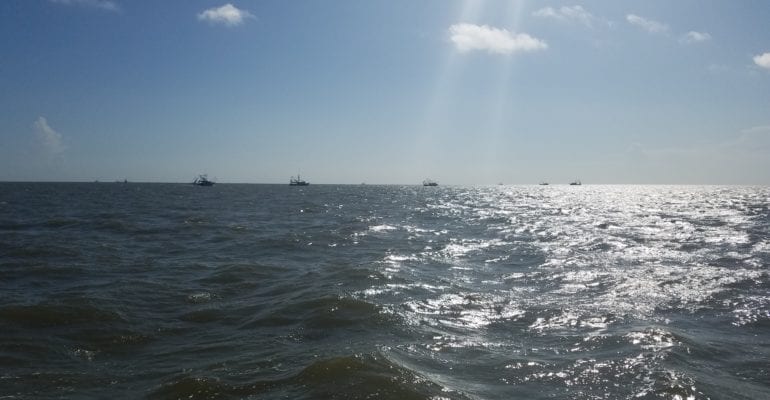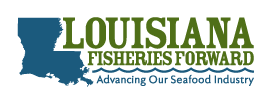The Gulf of Mexico Fishery Management Council (Council) met in Gulf Shores, Alabama April 4-7, 2022. The Council made preliminary appointments to its Coral, Data Collection, and Spiny Lobster Advisory Panels. Final appointments will be made during the June Council meeting after fishery violation background checks are completed. The Council also named the crew of the Florida Fish and Wildlife Conservation Commission’s (FWC) offshore patrol vessel Gulf Sentry as the 2021 Law Enforcement Team of the Year. The team will be honored during the June 2022 Council meeting in Fort Myers, Florida. The following is a brief summary of the other issues addressed during the meeting:
Historical Captain Permit Conversion
The Council took final action on a Framework Action to convert three reef fish and three coastal migratory pelagic historical captain permits to standard federal for-hire Charter/Headboat Permits. A previous Council action allowed the replacement of valid or renewable Gulf historical captain coastal migratory pelagic and reef fish permits with standard federal for-hire permits. That action also allowed outstanding letters of eligibility for historical captain permits to be used to obtain a permit prior to May 21, 2020. Three entities took advantage of the opportunity to redeem their outstanding letters of eligibility, and each received both Reef Fish and Coastal Migratory Pelagic historical captain permits. The Council has decided to allow those remaining six permits to be converted to standard federal for-hire permits. The Framework Action to convert Historical Captain Permits into standard federal Charter/Headboat Permits will be transmitted to the Secretary of Commerce for approval and implementation as soon as practicable.
King Mackerel
The Council took final action on Amendment 34 to the Coastal Migratory Pelagic Fishery Management Plan, which addresses South Atlantic Migratory Group King Mackerel Catch Levels and Atlantic King and Spanish Mackerel Management Measures. Coastal Migratory Pelagic species are managed jointly between the Gulf and South Atlantic Councils. The South Atlantic Council leads the development of this amendment but both the Gulf and South Atlantic Councils share responsibility for making management decisions. The Council selected the same preferred alternatives at the South Atlantic Council and recommends the following:
- Revise Atlantic king mackerel catch limits by incorporating new recreational landings estimates and creating a small buffer between the acceptable biological catch and annual catch limit
- Retain current sector allocations of Atlantic king mackerel at 62.9% recreational and 37.1% commercial
- Increase the recreational Atlantic king mackerel daily bag limit in the federal waters off Florida to 3 fish per person
The Amendment will be transmitted to the Secretary of Commerce for approval and implementation as soon as practicable.
The Council began work on Framework Amendment 11: Modifications of the Gulf of Mexico Migratory Group King Mackerel Catch Limits. A recent update stock assessment (SEDAR 38 Update 2020) determined that Gulf king mackerel is not overfished or experiencing overfishing. However, the spawning stock biomass was found to be below the biomass necessary to achieve maximum sustainable yield. The Council will solicit public comment on this framework amendment before taking final action during its June 2022 meeting.
After hearing a request from the industry, the Council initiated a framework amendment that will consider removing the prohibition on weekend and holiday fishing for the king mackerel gillnet fishery in the Southern Zone of the Gulf of Mexico.
Shrimp
The Council approved the annual Texas shrimp closure for 2022. The closure is part of a cooperative seasonal closure with the State of Texas that aims to allow shrimp to reach a larger and more valuable size prior to harvest.
The Council received an update on the short-term process for collecting shrimp effort data due to the cellular electronic logbook program no longer automatically transmitting effort data at the end of 2020 due to the expiration of the 3G network. The units are still collecting data, but they’re not automatically transmitting those data to NMFS. For 2021 and 2022, NOAA continues to collect data manually from the shrimp industry via mailed in Secure Digital (SD) cards. Unfortunately, the SD card return rates have been relatively low. The Council committed to using its Outreach and Education Technical Committee to identify the best process for conveying the importance of returning SD cards. The Council also plans to send letters to the NMFS Fisheries Statistics Division emphasizing the need for an increased SD card return rate and sharing the processes identified by the Outreach and Education Technical Committee.
Red Snapper
The Council’s Scientific and Statistical Committee (SSC) reviewed revised abundance data available for red snapper. The SSC updated red snapper catch advice based on the LGL Ecological Research Associates, Inc. study of red snapper absolute abundance off Louisiana, a post-stratification analysis for the Great Red Snapper Count-derived data for the State of Florida, and a catch analysis incorporating both studies developed by the Southeast Fishery Science Center. The SSC modified its recommendation for the red snapper overfishing limit to 18,910,000 pounds whole weight and increased its recommendation for the red snapper acceptable biological catch to 16,310,000 pounds whole weight. The Council initiated development of a framework action to update red snapper catch limits based on this new catch advice.
Greater Amberjack
The Council began work on Reef Fish Amendment 54: Modifications to Greater Amberjack Catch Limits and Sector Allocations. The most recent stock assessment (SEDAR 70 2020) determined that greater amberjack is both overfished and experiencing overfishing. This is the sixth time that the greater amberjack stock has been assessed and determined to be overfished and experiencing overfishing since 2000. The stock is scheduled to rebuild by 2027. In response to the stock assessment results, the Council’s SSC recommended a significant decrease in the overfishing limit and acceptable biological catch levels for greater amberjack. Additionally, new recreational catch estimates collected using the Marine Recreational Information Programs Fishing Effort Survey (MRIP-FES) indicated that recreational landings are greater than previously estimated and the Council may modify the sector allocation to account for this change in the estimate of historical participation by each sector. The Council plans to continue to work on this document during its June 2022 meeting.
Gag Grouper
The most recent stock assessment (SEDAR 72 2021), which included new recreational catch and effort data and an ecosystem-based red tide analysis, determined that gag grouper is overfished and experiencing overfishing. Additionally, the assessment identified that the proportion of males in the gag grouper population is less than 2%, which negatively impacts the stock’s ability to reproduce. The Council is obligated to end overfishing and develop a rebuilding plan for gag grouper, which will dramatically reduce catch limits during the rebuilding period. This rebuilding plan will need to consider revised catch limits, accountability measures, and other management measures. However, this plan amendment likely won’t be in place until 2024, so the Council asked NMFS to provide analyses for an interim rule to reduce harvest and end overfishing beginning January 1, 2023. The analysis should include options for the equitable distribution of commercial and recreational quota based on an annual catch limit of 660,000 pounds, which corresponds to the longest rebuilding timeline. Analyses should also focus on maximizing the number of recreational fishing days, which is anticipated to occur with a later start to the recreational fishing season. The Council expects to continue work on this interim rule during its June 2022 Council meeting and finalize the request to NMFS on the proposed management measures for the January 1, 2023 fishing year at this meeting.
Goliath Grouper
After hearing a summary of Florida’s limited goliath grouper harvest regulations in Florida state waters, the Council directed its SSC to reconsider goliath grouper catch limits in federal waters.
Commercial Individual Fishing Quota Focus Group
The Council populated its new Individual Fishing Quota (IFQ) Focus Group, whose charge includes reviewing the current goals and objectives of the IFQ programs and recommending their replacement or retention. The following 9 positions were filled by qualified applicants: dealer, crew with no shares, permit holder who leases allocation, small shareholder, medium shareholder, large shareholder, new entrant, public participant, and knowledgeable person not financially invested in the program. The position for an Eastern Gulf longline fisherman who leases red snapper was not filled. The list of appointees can be found
here.
Modification to For-Hire Location Reporting Requirements
The Council continued work on a Framework Action to ensure that for-hire trips are not delayed or canceled in the event of Vessel Monitoring System equipment failures. As of March 1, 2022, vessels with charter vessel/headboat permits for reef fish and/or coastal migratory pelagics must be equipped with a satellite or cellular position reporting unit that operates 24-hours a day, collects location data at least once an hour, and automatically transmits data to NOAA Fisheries.
The Council also discussed concerns expressed by permit holders, captains, and Reef Fish Advisory Panel regarding the burden of making multiple trip declarations (hail-outs) when moving short distances for non-fishing trips. In an effort to ease this burden, the Council will consider action to address proposed changes to the hail out regulations.
Fishery Ecosystem Plan
The Council heard a presentation from LGL Ecological Research Associates, Inc. who were contracted by the Council to develop a draft Fishery Ecosystem Plan with guidance from the Council’s Ecosystem Technical Committee. The plan lays out a systematic approach to fisheries management that considers physical, biological, economic, and social interactions and seeks to optimize benefits among a diverse set of societal goals. The plan suggests beginning implementation of the Fishery Ecosystem Plan by identifying and basing its work on specific Fishery Ecosystem Issues that are identified by the public, Council, and scientific community.
The Council accepted the draft Fishery Ecosystem Plan as a framework to begin discussions on how to develop a more fleshed out fishery ecosystem plan that develops the framework for identifying, prioritizing, and operationalizing fishery ecosystem issues. The Council also charged its Ecosystem Technical Committee with providing long-term advice on the Fishery Ecosystem Plan; developing goals and measurable objectives for the Fishery Ecosystem Plan and Fishery Ecosystem Issues; creating criteria for prioritizing and initiating work on Fishery Ecosystem Issues; and developing a plan to engage stakeholders in the process.
Electronic Voting
After hearing feedback from the public asking for greater transparency of Council votes, the Council decided to pilot an electronic voting system for Council and Council Committee motions that have opposition and all roll call votes. Results will be reported and included in the minutes.
Allocation Review
The Council was presented with an Allocation Review Guidelines document, which outlined the process to follow to conduct allocation reviews in the Gulf of Mexico. The Council recognized that it is a ‘living document’ and voted to approve it.
The Council asked the NOAA Southeast Fisheries Science Center to analyze alternative approaches to determining sector allocation. Historical landings are commonly used to make allocation decisions and the Council would like social and economic factors to be considered.





